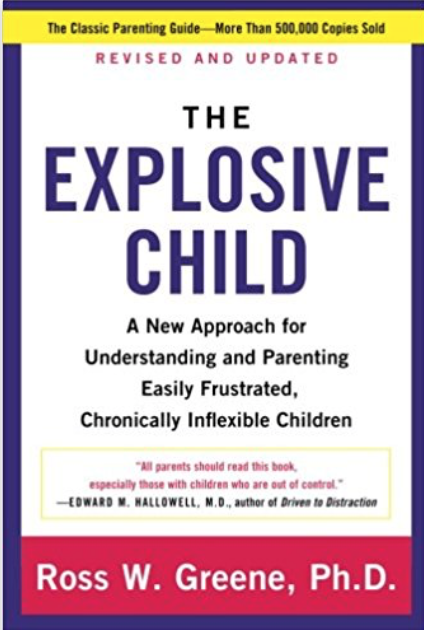(We are part of Amazon Affiliates.)
I’d refer to a handful of books on my shelf as life-changing, and The Explosive Child, by Ross Greene, is one of them. I read it when I was 22 and teaching elementary school in the Tenderloin. I wanted strategies to help me manage a classroom where a large portion of children was very troubled and prone to explosive outbursts that derailed entire weeks of instruction. And what I really needed was an explanation. There was a part of me that couldn’t reconcile it. Wasn’t this behavior simply unacceptable for nine and ten year olds? Shouldn’t I be able to just put my foot down? And why did that approach just make it all worse?
The Explosive Child explained to me for the first time why kids act out. Its explanation provided me a total paradigm shift, so I viewed behavior through the correct lens and could confidently utilize strategies that worked. When I put his plan into action, everything that Ross Greene said would happen, did.
Here’s his secret:
Kids do well if they can.
The Explosive Child starts out with this concept. All kids want to succeed and please adults, and they don’t benefit from acting out. Assuming that the adult in charge implements a caring and consistent form of discipline that works with the vast majority of children, a child who misbehaves has lagging skills that prevent him from meeting expectations. So instead of continually punishing the behavior, adults need to instead identify and address the lagging skills.
Greene provides a blueprint he calls “Plan B” that caretakers can follow to work together with children who suffer from poor impulse control, low frustration tolerance, and other skill deficits that cause emotional outbursts. Here are the steps:
Empathy Step: Connect with the child and give them something positive.
Define the Problem: Neutrally lay it down. “I noticed that you ripped up your homework yesterday. That’s a problem because your teacher needs you to turn it in. What’s up?” After this step, it’s important to listen. This is your chance to identify the lagging skill(s).
Invitation: Agree on a solution to try out and a method of tracking progress. Your solution should directly address the child’s lagging skill. In the homework example, we may find that the child struggles with fine motor skills so we’ll let them dictate for now and mom writes. We’ll keep a chart of whether the homework was indeed turned in and kept in one piece. In the meantime, we’ll provide appropriate fine motor work to support development.
I recommend this book to every parent who asks me for advice on difficult behavior problems. Any child who doesn’t change after repeated punishment can benefit immensely if their parents read this book. Ideally, parents and teachers will work together when it comes to implementing Plan B. Although it’s meant for parents of those five percent of children who need more than the standard discipline model, I really feel that this mindset is the most respectful way to discipline any child, whether or not they’re “easy.”
[hr]
Join us for next month’s book club selection, All Joy and No Fun: The Paradox of Modern Parenting that we’ll review on September 27.
Click here for all of our past reviews.
[xyz-ihs snippet=”book-club-explosive-child”][xyz-ihs snippet=”All-Joy-No-Fun-Book”]



















